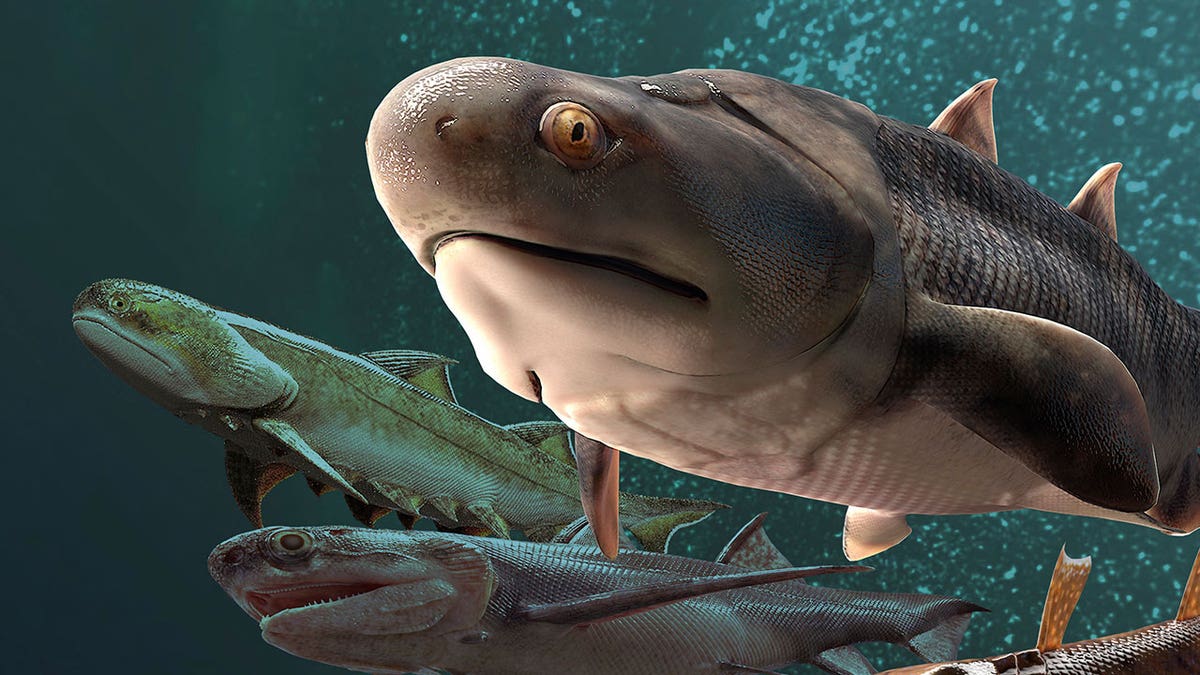Fox News Flash top headlines for September 28
Fox News Flash top headlines are here. Check out what's clicking on Foxnews.com.
A trove of fossils found in China includes the world's oldest teeth found, along with fossils that could give scientists insight as to how today's aquatic creatures evolved.
The fossils were originally found by a field team in 2019 after a frustrating trip during which no fossils were found, according to an email to the Associated Press from Min Zhu, paleontologist at the Chinese Academy of Sciences and lead researcher on the team.
The fossils are said to date back to the Silurian Period, about 443 million years ago to 419 million years ago, when backboned animals were still swimming on a majority water-covered planet. The fossils are said to be in good condition considering their age.
Scientific discoveries from this period have been lacking thus far due to the rarity of fossils.
1.8M-YEAR-OLD HUMAN TOOTH FOUND BY ARCHAEOLOGISTS
Among the fossils, researchers found 14 million-year-old bones termed teeth whorls with several teeth growing on them. Zhu stated they are the earliest concrete evidence of jaws to date.

This illustration provided by Heming Zhang in September 2022 depicts some of the fossil fish, more than 400 million years old, which were found by researchers in southern China, announced in a series of studies published in the journal Nature on Wednesday, Sept. 28, 2022. (Heming Zhang via AP)
Other fossils included a shark-like creature that featured a bony front, along with a jawless fish that is expected to give further insight into how ancient fins eventually evolved into arms and legs. Philip Donoghue, a University of Bristol paleontologist and one of the authors cited in the articles, said this was a rare find, with the fossil including the whole body instead of just the head.
BOY, 8 YEARS OLD, DISCOVERS GIANT SHARK TOOTH IN SOUTH CAROLINA: 'FIND OF A LIFETIME'
A new series of articles published Wednesday in the journal Nature details scientists' recent finds as they delve into the various Chinese fossils, including the teeth.

This illustration provided by Heming Zhang in September 2022 depicts Xiushanosteus mirabilis, one of the fossil fish, more than 400 million years old, which were found by researchers in southern China, announced in a series of studies published in the journal Nature on Wednesday, Sept. 28, 2022. (Heming Zhang via AP)
Researchers stated the Silurian Period marked a distinct shift in evolution for our backboned ancestors, as they began to evolve teeth and jaws around this time. This new adaptation allowed them to hunt for prey instead of scouring for food like other bottom-dwelling animals.
DINOSAUR SKELETON TO BE AUCTIONED IN NYC, FOSSIL IS 76 MILLION-YEARS-OLD
Donoghue said this change also spurred further anatomical evolutions, including the addition of fins.

This illustration provided by Qiuyang Zheng in September 2022 depicts fauna from Chongqing Lagerstätte, where fossil fish, more than 400 million years old, which were found by researchers in southern China, announced in a series of studies published in the journal Nature on Wednesday, Sept. 28, 2022. (Qiuyang Zheng via AP)
"It’s just at this interface between the Old World and the New World," Donoghue said.
CLICK HERE TO GET THE FOX NEWS APP
The Associated Press contributed to this report.





















